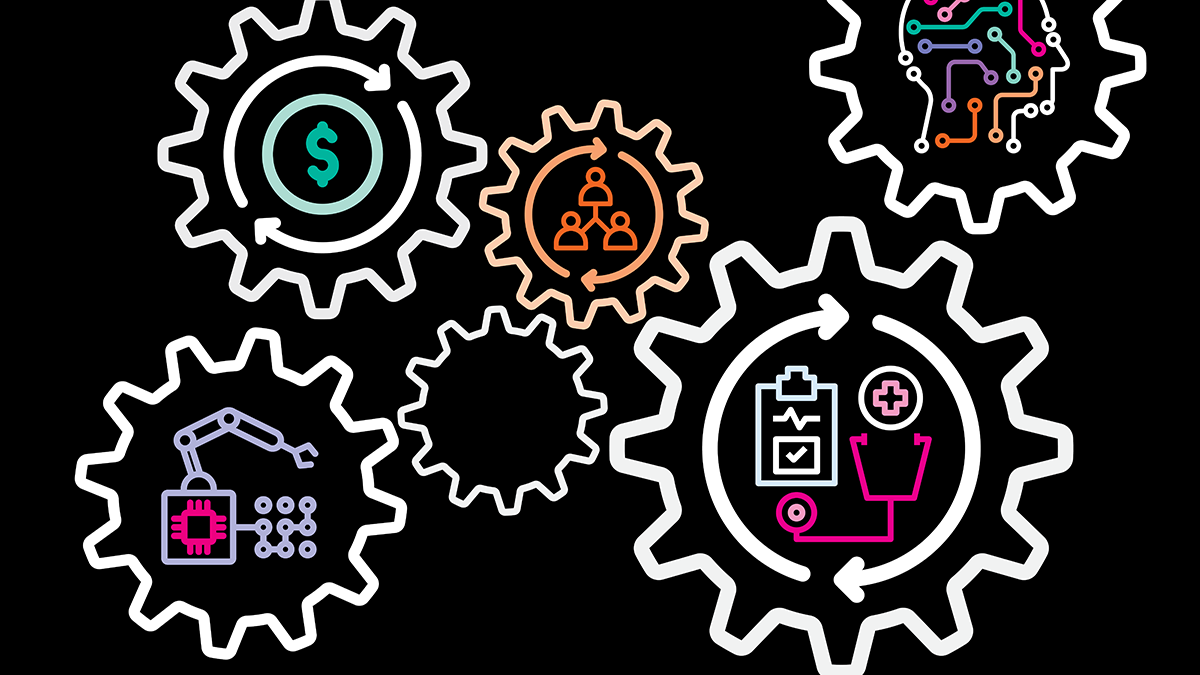Sponsored
Driving companywide efficiencies with AI
Advanced AI and ML capabilities revolutionize how administrative and operations tasks are done.
In partnership withTeleperformance
Autonomous shopping carts that follow grocery store customers and robots that pick ripe cucumbers faster than humans may grab headlines, but the most compelling applications of AI and ML technology are behind the scenes. Increasingly, organizations are finding substantial efficiency gains by applying AI- and ML-powered tools to back-office procedures such as document processing, data entry, employee onboarding, and workflow automation.

The power of automation to augment productivity in the back office has been clear for decades, but the recent emergence of advanced AI and ML tools offers a step change in what automation can accomplish, including in highly regulated industries such as health care.
Driving companywide efficiencies with AI
“In the past, AI was seen as a complex and expensive technology that was only accessible to large companies with deep pockets,” says Himadri Sarkar, executive vice president and global head of consulting at Teleperformance, a digital business services company. “However, the development of easy-to-use generative AI tools has made it possible for businesses of all sizes to experiment with AI and see how it can benefit their operations.”
Organizations are taking note with innovative use cases that not only promise to improve back-office operations but also deliver bottom-line benefits, from cost savings to productivity gains.
AI in action
According to McKinsey’s 2022 Global Survey on AI, AI adoption has more than doubled—from 20% of respondents having adopted AI in at least one business area in 2017 to 50% today. It’s easy to understand this technology’s growing popularity: as challenging economic times meet increasing customer expectations, organizations are being asked to do more with less.
“Companies are trying to optimize their use of resources in an inflationary environment,” says Omer Minkara, vice president and principal analyst with Aberdeen Strategy and Research. “Adding to the pressure is the fact that many companies have to defer their technology spend and headcount increases.”

Fortunately, AI and ML solutions can help bridge this gap for a wide range of industries by automating and optimizing various back-office tasks and processes. A retailer, for example, may use AI-powered chatbots to handle routine customer inquiries, track orders, and respond to refund requests, improving response times, enhancing customer experience, and freeing up contact center agents. At the same time, financial institutions are discovering the power of ML to identify anomalies within large volumes of data that may indicate fraud—an early warning system against financial loss. Organizations across industries can employ AI and ML tools to extract and analyze information from documents, such as invoices, contracts, and reports, and to reduce the burden of manual data entry while speeding up processing times and minimizing human errors.
This content was produced by Insights, the custom content arm of MIT Technology Review. It was not written by MIT Technology Review’s editorial staff.
Deep Dive
Artificial intelligence
Sam Altman says helpful agents are poised to become AI’s killer function
Open AI’s CEO says we won’t need new hardware or lots more training data to get there.
Is robotics about to have its own ChatGPT moment?
Researchers are using generative AI and other techniques to teach robots new skills—including tasks they could perform in homes.
What’s next for generative video
OpenAI's Sora has raised the bar for AI moviemaking. Here are four things to bear in mind as we wrap our heads around what's coming.
An AI startup made a hyperrealistic deepfake of me that’s so good it’s scary
Synthesia's new technology is impressive but raises big questions about a world where we increasingly can’t tell what’s real.
Stay connected
Get the latest updates from
MIT Technology Review
Discover special offers, top stories, upcoming events, and more.